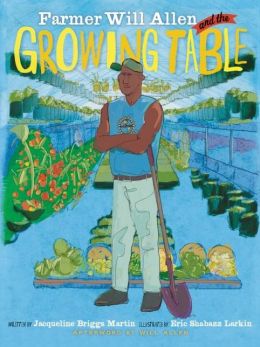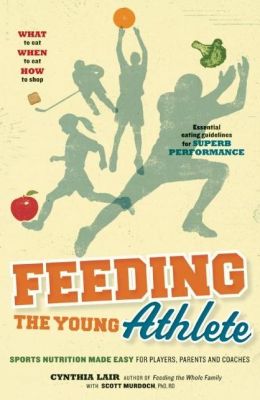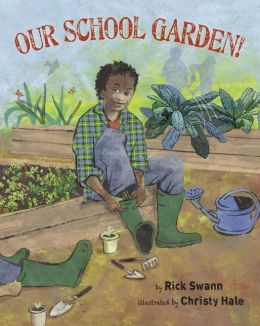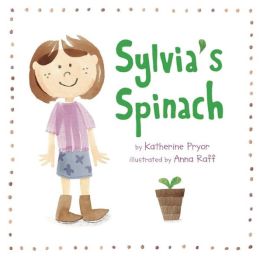There is an old saying: “Actions speak louder than words.” Philip Lee is a man of action. He is also a man of words. More specifically, he is a publisher of books. About twenty years ago he co-founded Lee & Low Books when he saw a need for multicultural titles. Philip retired from the company in 2004 but he did not retire from his interest in education. Recently, he has begun publishing a new line of books about food at READERS to EATERS. I recently spoke with Philip about why he has chosen such a seemingly narrow subject. What I have learned is that food–what we eat, how we eat, when we eat, where we eat, and why we eat–affects our entire well-being, our community and our world. “There’s an achievement gap in school not because the children have a learning problem, but a public health problem in terms of hunger and obesity. They can’t learn if they don’t get to eat good food. Community-based conversations are required. What better way to begin the conversation than through fun and interesting books,” states Philip.
Four titles have been published by READERS to EATERS Books. Philip is adept at selecting authors and illustrators who can connect with their intended audiences. The first title, Our School Garden! by Rick Swann, illustrated by Christy Hale (ages 8 to 12) was acquired in 2010 and released in 2012. Since then, Feeding the Young Athlete: Sports Nutrition Made Easy for Players, Parents and Coaches by Cynthia Lair (ages 12 and up) and Sylvia’s Spinach by Katherine Pryor and illustrated by Anna Raff (ages 4 to 8) have been published. In Our School Garden!, Michael relates, through a series of poems and informative text, his first year at his new school through the activities associated with the school garden. Feeding the Young Athlete informs middle and high schoolers about nutrition. It offers real food recipes for improving performance. Sylvia’s Spinach is about tasting a new food for the first time. The newest title, Farmer Will Allen and the Growing Table by Jacqueline Briggs Martin and illustrated by Eric-Shabazz Larkin will be launched on October 24 in conjunction with Food Day. It recounts how Will Allen, a former basketball star, becomes a farmer in the city of Milwaukee, receives a MacArthur “Genius Grant,” and grows a community through food. Each of these books includes author’s notes and/or resources for further information and to stimulate discussion. Each has something important to say to its intended audience and does so in a lively and entertaining way.
With Michelle Obama’s White House Kitchen Garden and the success of books such as Michael Pollan’s The Omnivore’s Dilemma, Philip believed the time was right to launch the discussion. In 2009, he began promoting food literacy through a pop-up bookstore. He would take it to farmers’ markets and education conferences. However, he soon began to see gaps in what was published. Fiction was fun. Nonfiction provided information but not engaging reading. He wondered why a book couldn’t be both informative and fun, and also address the current lifestyle of today’s children.
Recognizing that a book could be a vehicle for food awareness, Philip made pitches to his New York publishing friends. Interestingly, the response he received was similar to that of twenty years ago when he talked about the need for multicultural titles. At that time, they were not interested in broadening their publishing to include more diversity. This time, they were not interested in food literacy. Philip made the decision to get back into publishing. His goal is to publish a good read with something to discuss. He has accomplished that with each of the four titles published thus far by READERS to EATERS Books.
I asked Philip how librarians, teachers and administrators can help encourage good eating. He sees libraries as important neighborhood community centers and natural locations for food hubs. “Librarians do not need to do more. They just need to showcase and share what they are already doing.” Some libraries have created community gardens. Some have become seed lending libraries. Others have programs on ethnic foods, and bring in food authors to speak. Food Day (October 24) is the perfect opportunity to have a display of books about food. “They don’t have to be new books. Blueberries for Sal and In the Night Kitchen are books in all library collections. Food is a good springboard to other topics. Many libraries encourage One City Reads programs. Read a food book and share food at the event. Invite a local farmer to speak. Invite the school cafeteria manager to talk with parents at curriculum night. Proper nutrition and the ability to learn go hand-in-hand. Let’s get the message out there that food and the food system is exciting and it is easy to participate,” says Philip. “There are many opportunities to promote healthy eating/healthy kids. Food Day is just one opportunity. April is National Garden Month, March is National Nutrition Month. Since everyday is a good day to learn and to play sports, you don’t really need a special occasion to talk about food.”
When you visit the READERS to EATERS website (http://www.readerstoeaters.com) you will see that the recommended reading list includes books for all ages (children, Young Adult, and Adult) from a wide range of publishers. I asked Philip that since he is now publishing his own line of books if that creates a conflict of interest. His thoughtful response was that of an educator. “As a publisher, I am producing something and framing an issue. I am getting people to think playfully about the food they are eating. Anyone in publishing frames the conversation. We give a subject recognition. As a book-seller, I am putting a book in the hands of young people and their parents and hoping to begin a community dialogue. There is never one book that says it all. If my books encourage other publishers to bring out more books on the topic, the conversation expands. I welcome more books on the subject. If we are going to change the current American culture on what, where, and how we eat, it will take more than one book.”
What is next for READERS to EATERS? Philip continues his commitment to diversity through READERS to EATERS. He believes that it is a natural extension from Lee & Low Books. “Food culture is multicultural. Through the prism of food, we can learn history, geography, science, and art. We can discover stories of immigrants. At READERS to EATERS Books we will be expanding the line to include even younger children. We are currently looking at publishing some board books. We also plan to publish in Spanish. There will be books about eating and sharing mealtime with others. Did you know that over 50% of all meals in America are eaten alone?” states Philip who enthusiastically supplies facts and statistics.
In speaking with Philip, reading his new line of published titles, and visiting his website, it is clear that he has an insightful vision for improving the lives of children through words and action. His prowess as a publisher of books for young people, his knowledge of the nutrition-learning connection, the importance of community building, and his commitment to making positive changes in the lives of children are firmly rooted in READERS to EATERS. Join the discussion, nurture the young people you serve in your communities, and watch them blossom and grow.
For further information, visit READERS to EATERS at www.readerstoeaters.com; and follow them on Facebook, and Twitter (@READERStoEATERS).









